Do patients have a “happiness set point?”
Heart Sisters
OCTOBER 13, 2024
The best predictor of how happy you'll be several months after a major life event (positive or negative) might be how happy you were before it happened.

Heart Sisters
OCTOBER 13, 2024
The best predictor of how happy you'll be several months after a major life event (positive or negative) might be how happy you were before it happened.

HCPLive
OCTOBER 13, 2024
Over 70% of participants with MSK pain after COVID-19 fulfilled ACR fibromyalgia criteria in new research.

Circulation
OCTOBER 13, 2024
Circulation, Volume 150, Issue 16 , Page 1220-1222, October 15, 2024.
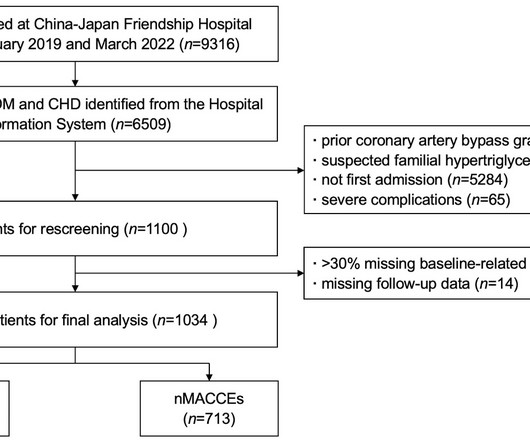
Cardiovascular Diabetology
OCTOBER 13, 2024
Triglyceride (TG) and its related metabolic indices are recognized as important biomarker gauging cardiovascular diseases. This study aimed to explore the association between multiple TG-derived metabolic indi.

Speaker: Simran Kaur, Co-founder & CEO at Tattva.Health
AI is transforming clinical trials—accelerating drug discovery, optimizing patient recruitment, and improving data analysis. But its impact goes far beyond research. As AI-driven innovation reshapes the clinical trial process, it’s also influencing broader healthcare trends, from personalized medicine to patient outcomes. Join this new webinar featuring Simran Kaur for an insightful discussion on what all of this means for the future of healthcare!

Circulation
OCTOBER 13, 2024
Circulation, Volume 150, Issue 16 , Page 1217-1219, October 15, 2024.
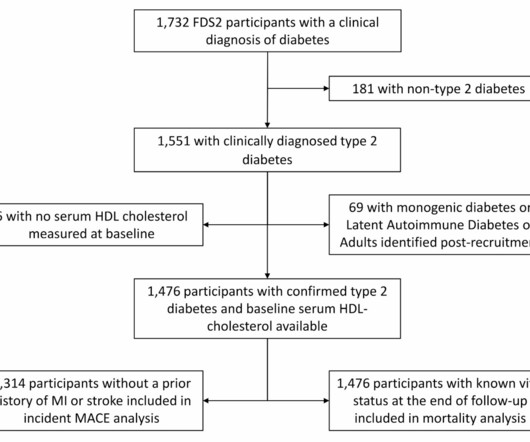
Cardiovascular Diabetology
OCTOBER 13, 2024
Older general population-based studies found an inverse association between serum HDL-cholesterol and both cardiovascular disease (CVD) events and mortality, but more recent data have suggested a U-shaped rela.
Cardiovascular Update brings together the best content for cardiovascular medicine professionals from the widest variety of industry thought leaders.
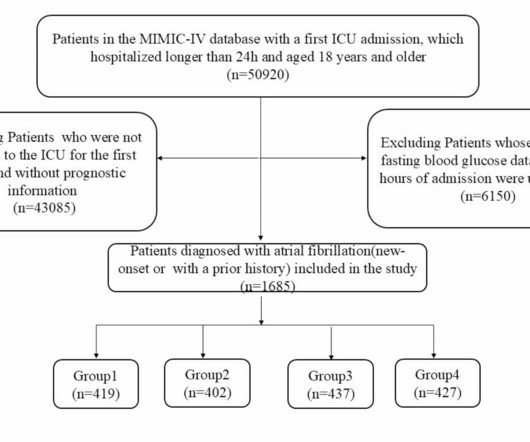
Cardiovascular Diabetology
OCTOBER 13, 2024
The stress hyperglycemia ratio (SHR) was developed to mitigate the influence of long-term chronic glycemic factors on stress hyperglycemia levels, which are associated with adverse clinical events, particularl.
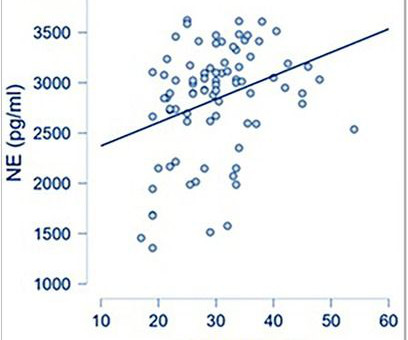
Frontiers in Cardiovascular Medicine
OCTOBER 13, 2024
ObjectiveThe present study aimed at evaluating the association between sympathetic nervous system activation (SNS) and the severity of coronary artery disease (CAD). In addition, we tested the hypothesis that inflammation and oxidative stress influence the SNS activation.MethodsAdult patients with severe CAD scheduled for coronary artery bypass graft (CABG) surgery were enrolled.

HCPLive
OCTOBER 13, 2024
A study found that high ultraprocessed food consumption increases the risk of SLE by 56%, with an even higher risk for anti-dsDNA positive SLE at 105%.
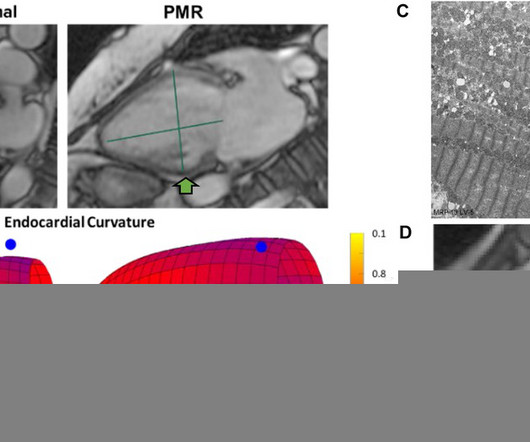
Frontiers in Cardiovascular Medicine
OCTOBER 13, 2024
Background2020 American College of Cardiology/American Heart Association (ACC/AHA) Guidelines state that the ideal time for mitral valve surgery in primary mitral regurgitation (PMR) is when the LV approaches but has not yet reached echocardiographic LV ejection fraction (EF) 40 mm. However, it is difficult to know the imminent risk of crossing this threshold when the surgical outcome is less optimal.ObjectiveUsing machine learning and statistical models, we have shown that cardiac magnetic re

HCPLive
OCTOBER 13, 2024
Linda Gillam, MD, MPH, discusses updates in the management of aortic stenosis, with a focus on use of TAVR.

Frontiers in Cardiovascular Medicine
OCTOBER 13, 2024
BackgroundThe existence and reasons for the weekend effect in patients with ischemic heart disease (IHD) were not yet fully identified. This study aimed to evaluate whether weekend admission was independently associated with in-hospital mortality and the possible mechanisms associated with the IHD patients.MethodsThe study was a retrospective study, including IHD patients from 2015 to 2023.

Circulation
OCTOBER 13, 2024
Circulation, Volume 150, Issue 16 , Page e276-e277, October 15, 2024.
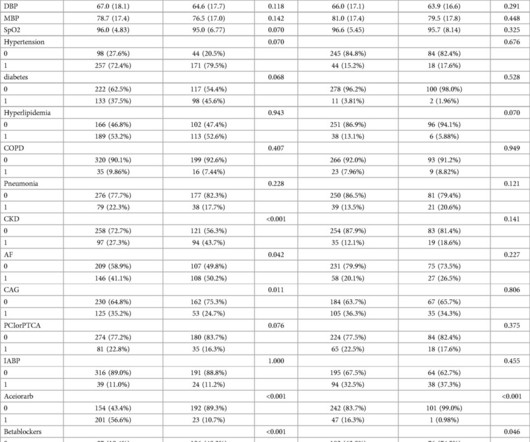
Frontiers in Cardiovascular Medicine
OCTOBER 13, 2024
BackgroundIn the ICU, patients with acute myocardial infarction and cardiogenic shock (AMI-CS) often face high mortality rates, making timely and precise mortality risk prediction crucial for clinical decision-making. Despite existing models, machine learning algorithms hold the potential for improved predictive accuracy.MethodsIn this study, a predictive model was developed using the MIMIC-IV database, with external validation performed on the eICU-CRD database.

HeartRhythm
OCTOBER 13, 2024
Sympathetic overactivation and neuroinflammation in the paraventricular nucleus (PVN) are crucial factors in post-myocardial infarction (MI) cardiac remodeling and ventricular arrhythmias (VAs). Prior study has indicated that low-intensity focused ultrasound stimulation could attenuate sympathetic neuroinflammation within the PVN to prevent the occurrence of VAs in acute MI model.

Frontiers in Cardiovascular Medicine
OCTOBER 13, 2024
BackgroundAcute pericarditis represents an inflammatory disease affecting the pericardial layers. In developed countries more than 80% of pericarditis are defined as idiopathic, less frequently they are secondary to other conditions such as infections, rheumatic or systemic inflammatory diseases, cancer, post–cardiac injury syndromes and radiation therapy (RT).Case presentationWe reported a case of a patient with acute pericarditis that occurred a few hours after chest radiation therapy, perform

Journal of Cardiothoracic Surgery
OCTOBER 13, 2024
The management of acute type A aortic dissection (ATAAD) using the Ascyrus Medical Dissection Stent (AMDS) can lead to complications due to the persistence of the false lumen (FL). This case report presents tw.
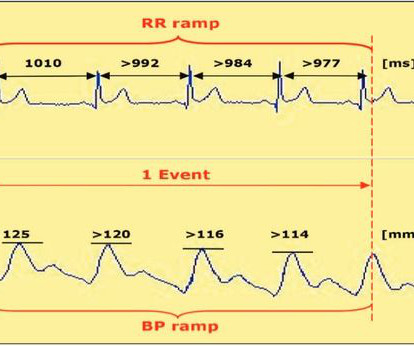
Frontiers in Cardiovascular Medicine
OCTOBER 13, 2024
BackgroundThe autonomic nervous system (ANS) plays a significant role in atrial fibrillation (AF). Catheter ablation (CA) is a well-established treatment method for AF and significantly affects the ANS, including baroreceptor (BR) function. However, little is known about the changes in BR function caused by radiofrequency (RF) or cryoballoon energy (CB) and its impact on future AF recurrences.PurposeTo assess 1-year efficacy of CA of AF in relation to BR function modification and type of ablatio

HeartRhythm
OCTOBER 13, 2024
In this issue of Heart Rhythm, Wu and colleagues investigated the role of serotonin and serotonin-related metabolites in the pathogenesis of vasovagal syncope (14). The understanding of the role of serotonin in the vasovagal reflex began in 1867 when von Bezold and Hirt reported that injections of veratrum alkaloids, which are extracted from Veratrum californicum and V. viride, into animals caused hypotension, bradycardia, and apnea (1).
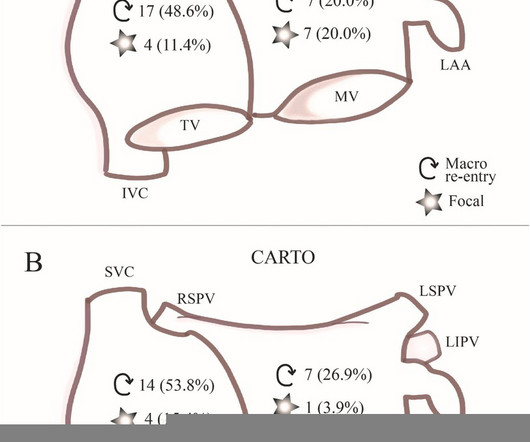
Frontiers in Cardiovascular Medicine
OCTOBER 13, 2024
IntroductionAtrial tachycardia (AT) frequently occurs after cardiac surgery or surgical ablation procedures. The novel charge density-based mapping system (CDM) provides global chamber mapping and can detect crucial pathways of conduction; therefore, it has potential added value in catheter ablation (CA) of post-surgical ATs. We aimed to test the hypothesis that CDM-guided CA procedures are safe, feasible, and may improve outcome compared to conventional sequential 3D mapping (CARTO)-based CA.Me
Let's personalize your content